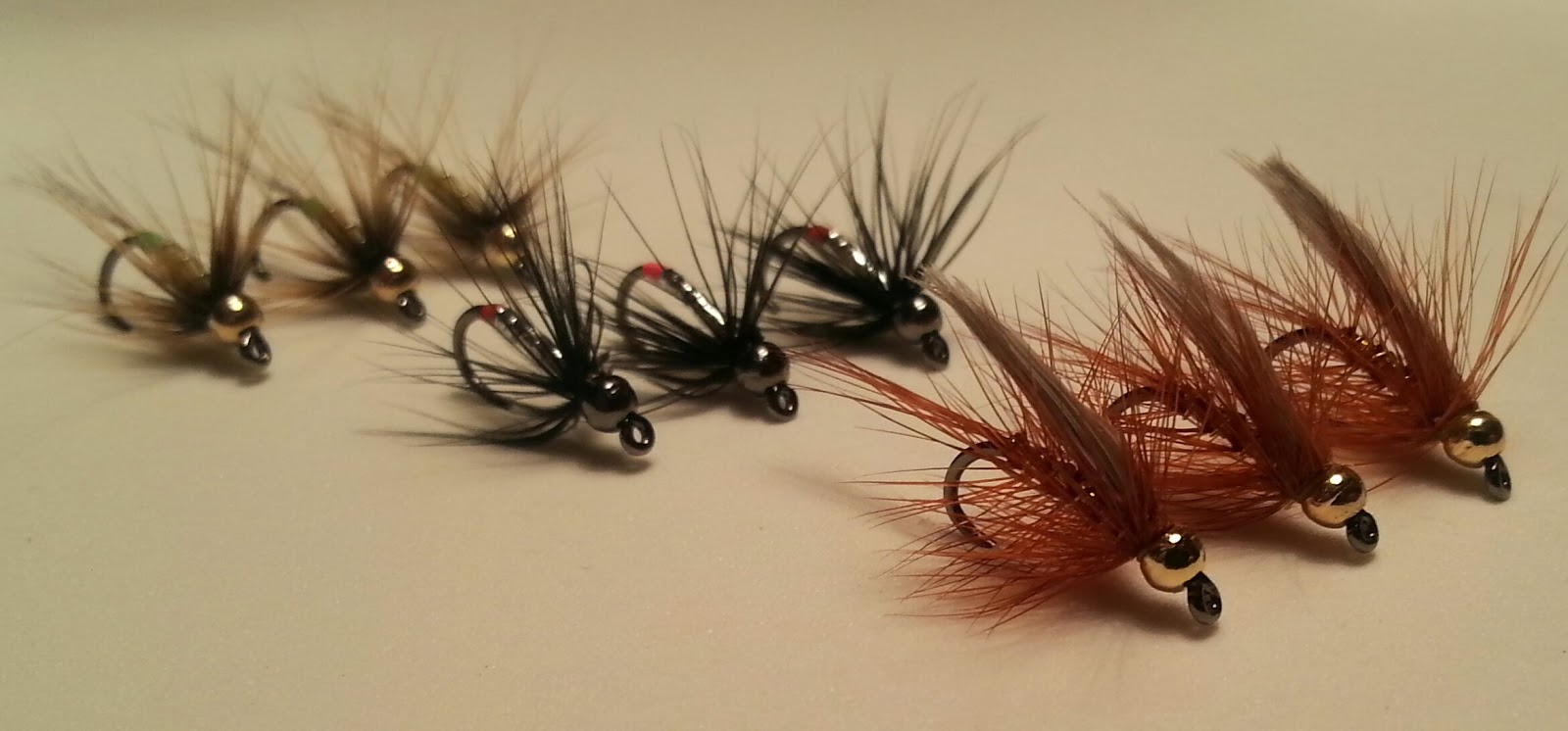 After an hour or so we began to move clockwise around the lake and again we began to meet more good quality fish. I had switched over to buzzers and caught a nice fish on a gold buzzer with a bead head. Hubert fished a bung with some blood worms and a sunburst blob, this proved to be very successful for him as he picked up some nice fish. As you can see him here landing one of those fish. The fish in the lake are really good quality fish well matured and well able to fight. There is both Browns and Rainbows in the lake. There was plenty of fish showing around lunch time and after a short spell and fairly unproductive session on the dries I switched over to the bung also due to Hubert's catch rate on this set up. It was not long before it proved to be the right decision and I picked up a couple of fish on a Blood worm. Dave was still on the lures and also meeting some good fish on a slim white and olive streamer with a yellow bead head, the tail on this streamer is two and a half times the length of the body and moves quite well in the water.
After an hour or so we began to move clockwise around the lake and again we began to meet more good quality fish. I had switched over to buzzers and caught a nice fish on a gold buzzer with a bead head. Hubert fished a bung with some blood worms and a sunburst blob, this proved to be very successful for him as he picked up some nice fish. As you can see him here landing one of those fish. The fish in the lake are really good quality fish well matured and well able to fight. There is both Browns and Rainbows in the lake. There was plenty of fish showing around lunch time and after a short spell and fairly unproductive session on the dries I switched over to the bung also due to Hubert's catch rate on this set up. It was not long before it proved to be the right decision and I picked up a couple of fish on a Blood worm. Dave was still on the lures and also meeting some good fish on a slim white and olive streamer with a yellow bead head, the tail on this streamer is two and a half times the length of the body and moves quite well in the water. We did find in the afternoon that the fish were taking very softly under the bung and hook ups was on a lesser percentage that misses, you would either not feel anything on the strike of the fish would come off quickly. There is some small fry in the lake as one popped out of a trouts mouth when I landed him and we fished some small fry patterens in the afternoon and again the fish were just plucking at the tails and not committing to the take. The bung and slow retrieving blood worms proved to be the most productive method for the day along with the slim streamer day. Most other anglers here on the day appeared to be on more or less the same methods slow retrieving floating lines with buzzer, nymphs or blood worms on the leaders. This a really nice and well kept fishery and ill visit it again in the future, it has really good conditioned fish and they can fight too; the banks are very clean with seating and I didn't come across much weed under the surface which is a petty hate of mine. The depths vary from 10 to 17 foot and has some nice small islands and bays. Well worth a visit and a nice bag of chips on the way home to finish off a good day catching up with some friends.
We did find in the afternoon that the fish were taking very softly under the bung and hook ups was on a lesser percentage that misses, you would either not feel anything on the strike of the fish would come off quickly. There is some small fry in the lake as one popped out of a trouts mouth when I landed him and we fished some small fry patterens in the afternoon and again the fish were just plucking at the tails and not committing to the take. The bung and slow retrieving blood worms proved to be the most productive method for the day along with the slim streamer day. Most other anglers here on the day appeared to be on more or less the same methods slow retrieving floating lines with buzzer, nymphs or blood worms on the leaders. This a really nice and well kept fishery and ill visit it again in the future, it has really good conditioned fish and they can fight too; the banks are very clean with seating and I didn't come across much weed under the surface which is a petty hate of mine. The depths vary from 10 to 17 foot and has some nice small islands and bays. Well worth a visit and a nice bag of chips on the way home to finish off a good day catching up with some friends.
I hope you have enjoyed reading this post and if you have any comments or questions just drop me a line below, also if you would like to see whats coming next on this blog just sign in and follow us. Thanks for reading.














.jpg)






















.jpg)






